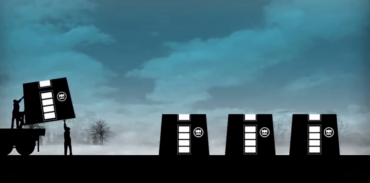 Lebanon’s government has finally agreed to a trial run of IKEA’s prefabricated flatpack homes designed for refugees, but they’re not excited about it.
Lebanon’s government has finally agreed to a trial run of IKEA’s prefabricated flatpack homes designed for refugees, but they’re not excited about it.
The prefab homes were a huge hit when they were unveiled earlier this year – blogs all across the globe picked up the story.
Designed as an alternative to tents currently used to shelter refugees, IKEA and the UN’s refugee agency (UNHCR) put three years and $4.6 million into developing them.
Sturdy but relatively lightweight, they come with a small solar panel, and are easily transported when disassembled in under four hours.
They aren’t cheap – each costs $7,500 – but they do provide a great deal more protection from the elements than existing solutions.
That might seem like a good thing, but the Lebanese government is concerned that these steel-framed homes will be too cozy for the refugees, who might then be inclined to overstay their welcome.
After more than 500,000 Palestinian refugees fled to Lebanon in 1948 and never left, the government is leery to encourage the roughly one million Syrian refugees to make the country their permanent home.
As it stands, the refugees who poured into Lebanon to escape the violence in Syria already make up 25 percent of the latter’s population, which puts a huge strain on the country’s infrastructure.
“In Lebanon the government has been reluctant to set up any structure that has any resemblance of permanence,” Roberta Russo, UNHCR’s Beirut-based spokesperson, told TIME Magazine.
“After what they went through with the Palestinians, they want to make sure the presence of Syrians is temporary.”
Still, after six months of negotiating, the government has agreed to at least allow a trial run. But this won’t result in any significant changes for the refugees any time soon.
Jean-Marie Garelli, UNHCR’s program director for the Syrian refugees told TIME that the government’s receptivity is positive. “However it will take some time to put these shelters in place. You won’t see a miracle in a week.”
In the meantime, severe cold, rain and snow make conditions intolerable for refugees. Over the weekend, camps were flooded, and the emergency kits distributed by aid agencies are scarcely sufficient to keep people warm.
Refugees in Jordan aren’t faring any better.




The IKEA are a great designers. I have always admired their creations. But, in this case I feel they could have used a little more imagination and come up with something that looked more ‘home’ and less a car paint booth. Also, they could have used used ideas from nomadic people ranging from Siberia to India and from rural folk living in tropical regions, and come up with a design that was sturdy, catered to all kinds of weather, had a life of about two years and with repairs up to five, and cost much less to develop and produce. That way it would require less funding to set up a refugee camp and no one would overstay their welcome.